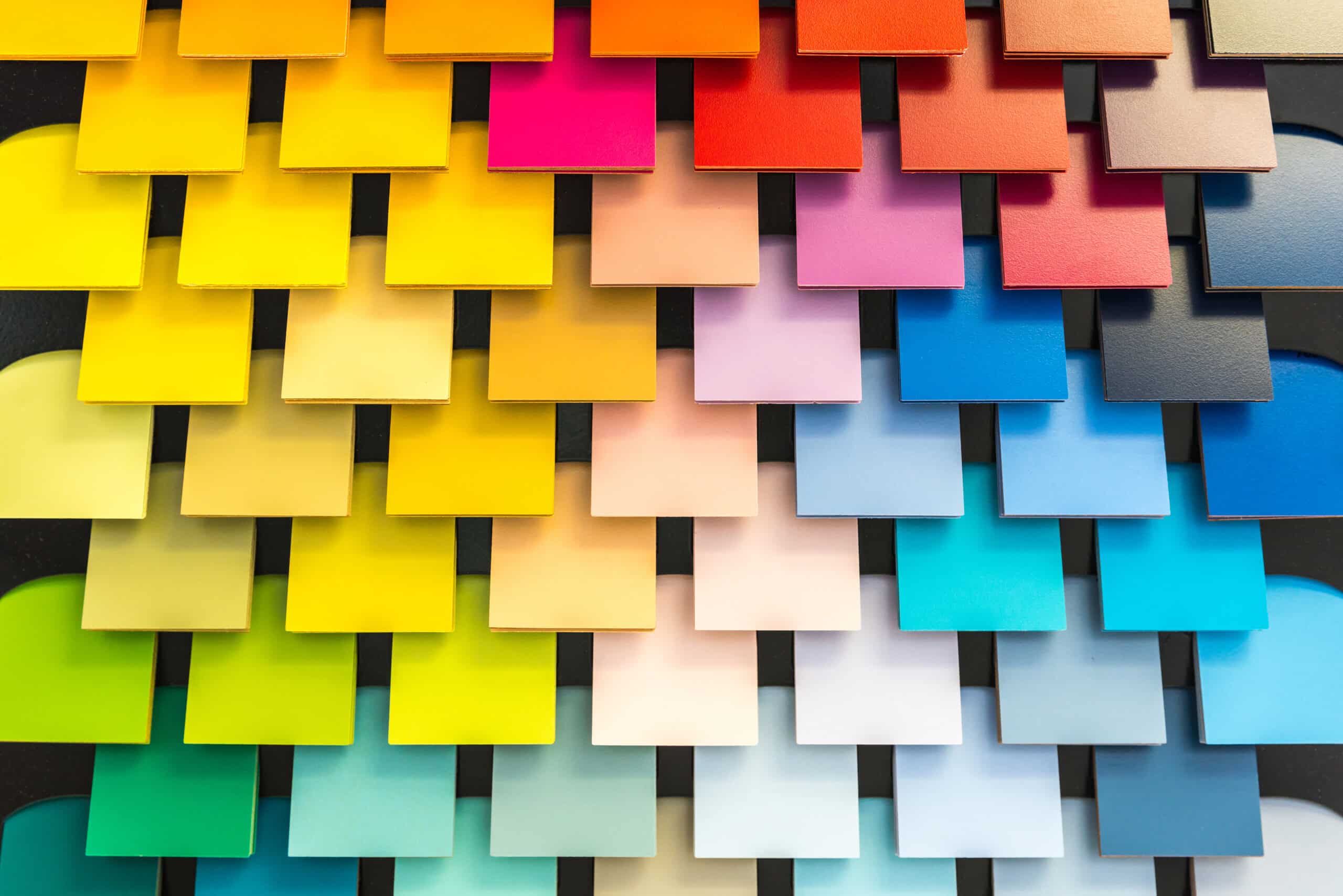Paper
Paper is a porous material so it absorbs ink quickly and can result in a more muted or subdued colour. Every type of paper has a weight, a processing type, and finish. The weight and thickness of paper also affect the paper’s texture and therefore the appearance of colour. Paper is commonly laminated to provide bulk and longevity to an item, so it’s great for brochures, business cards, point-of-sale items, and product packaging. Laminated paper also alters the presentation of colour thus providing a more versatile choice for your brand colours. There is even an anti-scuff laminate which lends itself well to darker colours, and a recyclable eco-laminate which is growing in popularity.
Gloss
Gloss-laminated paper has a high shine and makes colour pop, so this is a great choice for bright, eye-catching leaflets, flyers, and magazines.
Matte
In contrast, matte-laminated paper is more likely to increase colour opacity and therefore produce a more subdued, softer colour, so if you’re looking for a more natural feel to your marketing literature then matte-laminated paper may be the way to go.
Soft touch
Soft-touch laminated paper has a velvety feel which makes it a very tactile option. The soft-touch laminate is usually applied in liquid form after the ink has been applied so that the paper dries with a soft feel texture. Darker ink will appear more muted and arguably more sophisticated when a soft-touch coating is applied.
Spot UV
Spot UV is a clear coating of polymer which is usually applied to matte-laminated paper or card. It is applied in liquid form and then exposed to UV light which makes it dry instantly. It is usually applied to print marketing to highlight specific content, for example, it’s a great finish for items with photos in them because the spot UV of the photos contrasts well with the matte-laminated background. Spot UV also adds texture and dimension to key information on business cards and leaflets. It’s important to note that spot UV affects colour differently depending on whether spot UV is applied directly over previously printed material or uncoated substrates.
Fabric
Fabrics are made up of different fibres so it’s important to select the most appropriate fabric for your print project. If you’re in the process of updating your branded uniform or ordering your very first uniform it’s well worth considering the different fabric choices available to you in terms of how colour will present. Natural fibres like cotton are highly favoured because not only are they breathable and easy to wear, ink bonds to natural fibres much more efficiently than synthetic fibres. Synthetic fibres aren’t as porous because they’re usually made of lots of different plastics, so their longevity doesn’t rival its cotton counterpart.

Sometimes colours appear differently in fabrics solely because of the print process. For example, Tension Fabric Displays are excellent for events and exhibitions because they’re portable, and easy to set up. The printed fabric sits over a lightweight frame and provides a clean look for your brand. It often depends on how many print runs you need as to which process you choose. The dye-sublimation process usually results in a more vivid colour because the ink absorbs into the fibres rather than being deposited on the surface, which is called UV process. To add to the mix, you can front light or back light your tension fabric which all has an effect on the overall colour presentation.
Wood
Wood is very absorbent because it’s a natural fibre and holds ink well, but the overall colour can be affected by the type/colour of the wood itself. If you want a very colourful or detailed design, then lighter woods like pine are ideal, the darker the wood, for example, Mahogany, the harder it will be to print colour effectively. Bamboo is becoming a very popular material for promotional marketing; it’s sustainable and versatile, and the quality of colour output is high with little or no colour change during the print process.
Metal
The surface of metal is shiny and reflective which can cause light to be scattered or reflected in different directions and affect the output of colour. Metal surfaces aren’t as porous as paper or fabric so ink sits on top of the surface rather than being absorbed, causing colours to appear more saturated. One of the most commonly used products for brands are metal pin badges, worn on bags, clothes etc. Colours are usually transferred directly onto a white underlay which maintains colour consistency because the metal type/colour doesn’t affect the ink. Our team print thousands of awards recognition pin badges for DPD. They’re a subtle way to enhance your brand and/or reward employees.
Plastic
Plastic has similar properties to metal in that it won’t absorb ink as well as other materials. A plastic’s chemical make-up can cause certain inks to react differently resulting in unexpected colour changes. It isn’t just the type of plastic which affects colour output, the type of ink used, and the print process are all an intrinsic part of achieving the desired colour. Like with metal, ink is often screen printed directly on top of the plastic substrate, usually with a white underlay as a base. For example, transparent vinyl is often used to stick on retail window displays, and for the artwork colour to pop on the vinyl the colour needs to be screen printed on white ink first.
How can we help?
If you’d like further advice on materials to suit your print project, we’d love to help. Give the team a call on 0115 951 2468 or email [email protected]
Back to case studies


